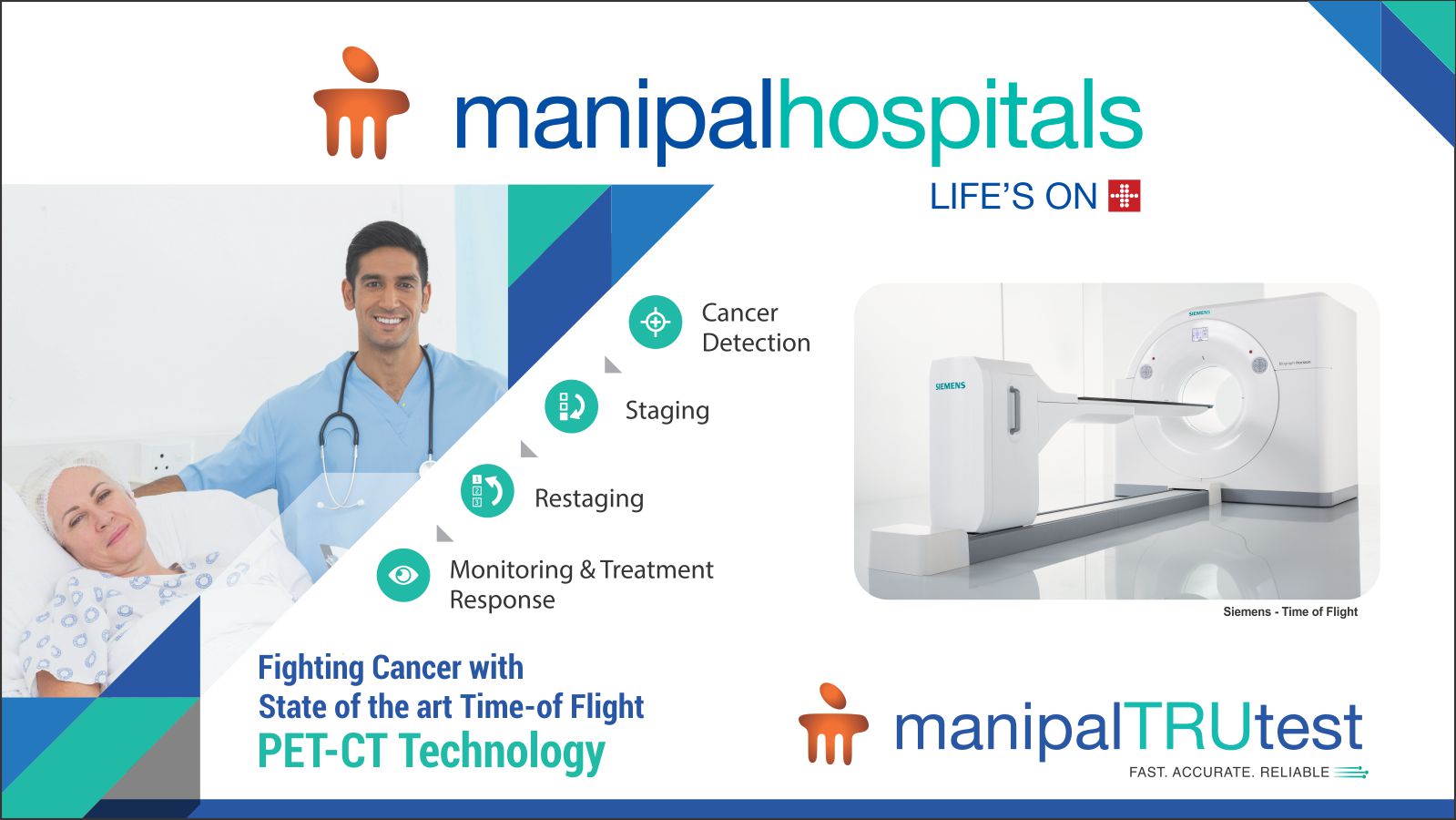Book on Whatsapp
9892101616
pet-ct-scans
What is PET-CT SCAN ?
The PET-CT Scan detects cancer in its initial stage, as well as alteration level of the "cellular function" and indicates the location of the tumor, early before experiencing the first symptom. It provides a diagnosis of the condition of the same with high accuracy.
What diseases can be detected through a PET-CT SCAN ?
Below are a few examples:
- Neoplasms/Tumors, even during early stages
- Cancer: Breast, Pancreas, Lung, Lymphoma, Prostate, etc.
- Changes in Alzheimers disease in order to initiates treatment of the same in the best manner possible
- Infections (Fevers of unknown origins)
- Identification of other immunological diseases or uncommon tumors
- Allows research of the extension and response of treatment to different cancers
Positron Emission Tomography (PET) is a non-invasive, diagnostic imaging technique for measuring the metabolic activity of cells in the human body with the help of radio-tracer like FDG/PSMA/DOPA.
What are the benefits of PET CT ?
The benefits of PET/CT images in the entire spectrum of cancer care—from diagnosis and treatment planning to evaluation of treatment response
Early Diagnosis:
PET/CT has proven particularly valuable in diagnostic applications for cancers that are not easily reached for biopsy, such as lung cancer.
Staging/Restaging:
PET/CT provides accurate disease staging and localization for biopsy, surgery or treatment planning.
Response to Treatment (Monitor Therapy):
Assess response to and effectiveness of treatments. PET/CT detects residual or recurrent disease and is an excellent diagnostic procedure to differentiate tumor recurrences from radiation necrosis or post-surgical changes. Such an approach allows for the development of a more rational treatment plan for the patient. PET/CT can help guide further therapy by either confirming response or signaling the need for a change in therapy.

Type of PET CT
- Whole Body F-18 FDG PET SCAN : This scan uses Glucose analog Fluorodeoxyglucose (FDG), The role of this procedure is to detect metabolically active malignant lesions including lung cancer, colorectal cancer etc.
- PSMA PET : imaging is a FDA approved scan with more precise detection of prostate cancer for better treatment planning and targeted care. More effective in pin pointing and eliminating tumors not only in the prostate but also throughout the pelvis and the body in cases where the tumors have migrated.
- F-18 DOPA PET SCAN : DOPA PET-CT Scan is a molecular imaging test generally used to study Parkinson's Disease. The combination of F-DOPA and PET-CT scanning provides the most efficient method of detecting Parkinson's Diseases.
Preparation for PET CT
Tell the doctor:
- If the patient ever had a bad allergic reaction
- If the patient have been sick recently or the patient have another medical condition, such as diabetes
- If the patient is taking any medications, vitamins or herbal supplements
- If the patient is pregnant or the patient think the patient might be pregnant
- If the patient is breastfeeding
- If the patient is afraid of enclosed spaces (claustrophobic)
The doctor will give detailed instructions to the patient on how to prepare for the scan. A general rule is to avoid strenuous exercise for a couple of days before the study and to stop eating four hours before the scan.
What the patient can expect
The PET-CT scanner is a large machine that looks a little like a giant doughnut standing upright, similar to CT or MRI scanners.
From start to finish, the procedure takes about two hours to complete and typically does not require an overnight hospital stay. When the patient arrive for the scan, he/she may be asked to:
- Change into a centre gown
- Empty the bladde
Our clinician / technician will inject the radioactive drug (tracer) into a vein in the patient’s arm or hand. The patient may briefly feel a cold sensation moving up the arm. The patient rest and remain silent in a reclining chair for 30 to 60 minutes while the tracer is absorbed by the patient body.
During the procedure
When the patient is ready, he / she will lie on a narrow, padded table that slides into the part of the scanner that looks like a doughnut hole. During the scan the patient must be very still so that the images aren't blurred. It takes about 30 minutes to complete a PET-CT scan. The machine makes buzzing and clicking sounds.
The test is painless. If the patient is afraid of enclosed spaces, he/she may feel some anxiety while in the scanner. Be sure to tell the technician / clinician about any anxiety causing the patient discomfort. Our technician / clinician may give the patient a drug to help the patient relax.
After the procedure
After the test the patient can carry on with the his/ her day as usual, unless the doctor tells the patient otherwise. The patient will need to drink plenty of fluids to help flush the tracer from the his / her body.
We provide first-of-its-kind premium PET CT scan technology that harnesses the power of advanced cancer diagnosis. A PET-CT scan is a one-stop solution for accurate and thorough cancer imaging. This non-invasive procedure helps detect and monitor cancer, heart disease, and neurological disorders early. Our advanced equipment and skilled professionals ensure precise imaging for informed treatment decisions. Recognizing the importance of affordability, we offer competitive pricing for whole-body PET scans, providing value without compromising quality. Count on us for fast, reliable, and affordable cancer diagnostic services.
